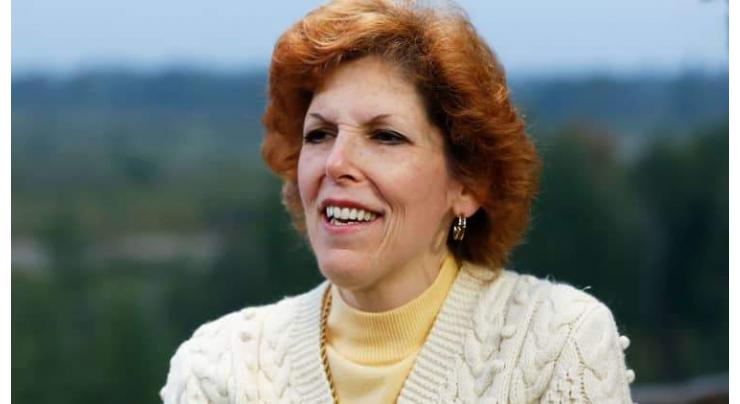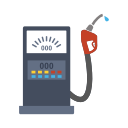
US Rates Must Go Above 5%, Stay There A While To Fight Inflation - Fed's Mester
Sumaira FH Published February 16, 2023 | 11:24 PM

US interest rates need to rise to above 5% and remain there an extended time in order to bring inflation down meaningfully, the Federal Reserve's regional head for Cleveland Loretta Mester said Thursday
WASHINGTON (UrduPoint News / Sputnik - 16th February, 2023) US interest rates need to rise to above 5% and remain there an extended time in order to bring inflation down meaningfully, the Federal Reserve's regional head for Cleveland Loretta Mester said Thursday.
"How far the Fed goes above 5% depends on data," Mester, who is president and chief executive at the Federal Reserve Bank of Cleveland, said in a live-streamed speech. "Upside risks to inflation remain in place."
Rates currently stand at a peak of 4.75% after eight hikes by the Fed over the past year. The central bank's last rate revision was on February 1 and its next is due on March 22.
The Fed added 450 basis points to rates since March via eight hikes, in its bid to control runaway inflation. Prior to that, US rates peaked at just 25 basis points, as the central bank slashed them to nearly zero after the global COVID-19 outbreak in 2020.
The Fed's first post-COVID hike was a 25-basis point increase in March last year. It then moved up with a 50-basis point increase in May. After that it executed four back-to-back jumbo-sized hikes of 75 basis points from June through November. Since then, it has returned to a more modest 50-basis point increase in December and a 25-basis point hike in February.
Mester's comments came after US wholesale prices, one of the key determinants of inflation, rose their most in seven months in January, according to a Labor Department report on Thursday that seemed to further complicate the Fed's job of keeping a lid on price growth.
Wholesale prices, or what retailers pay when they buy products from manufacturers in large quantities, jumped 0.7% in January, the most since June last year, when they rose 1.2%, the Labor Department's so-called Producer Price Index, or PPI, report said.
A separate measure of wholesale prices which strips out volatile food and energy costs - called core PPI - climbed 0.6% last month, the most in 10 months.
The PPI reading itself came two days after the broader Consumer Price Index, or CPI, report for January, which also showed stickier-than-expected inflation in the United States.
The CPI rose 6.4% in the 12 months to January, marking the smallest inflationary growth since October 2021. But for January itself, the index rose 0.5% after a 0.1% decline in December. Core month-on-month CPI, which strips out volatile food and energy prices, was up 0.4% in January, unchanged from December.
The back-to-back reports on inflation underscore the challenge to the Fed's plans to have smaller rate hikes this year after a year of aggressive monetary tightening.
Mester said she was "not yet certain" whether the Fed will need to raise interest rates by higher amounts when it meets on March 22.
"The Fed can accelerate the pace of hikes if conditions warrant it," she said. "More upside inflation surprises may prompt the Fed to tighten policy more aggressively. Recent data shows the demand side of the economy is not softening as expected."
But in an acknowledgement of the risks that lay ahead for the economy, she said: "We do not want to surprise markets with Fed actions that will slow growth and increase unemployment."
The US economy is forecast to grow 2.5% in the first quarter of 2023, slowing from a 2.9% expansion in the fourth quarter. The job market, meanwhile, continues adding hundreds of thousands of jobs each month and higher wages for workers. The Fed has identified jobs and wage growth as among the principal drivers of inflation.
Related Topics
Recent Stories

Tennis: ATP Barcelona Open results - 1st update

Swiatek's perfect 10 in Stuttgart as Vondrousova stuns Sabalenka

Arandu's roads closed due to flooding

Oil tanker catches fire in Islamabad’s Blue Area

Pakistan committed to ensure safety of foreign nationals: FO

Tennis: WTA Stuttgart results - 1st update

Four passengers injured as train hit an empty vehicle

Over- speeding bus crushed to death two bike riders

Turkey's Freedom Flotilla ready to set sail for Gaza

French teen dies from heart failure after knife attack near school

Iranians appear unfazed by Isfahan blasts

UAF celebrates Int'l Chinese Language Day
More Stories From Business
-

Pakistan aims to agree outline of new IMF loan in May - Finance Minister
11 hours ago -

FTO commends FBR's role for prompt resolution of tax payers’ issues
11 hours ago -

BISP embraces E-procurement: launches inaugural tender
13 hours ago -

Business community indebted to Ahsan Zafar for his unprecedented services: Yousuf Rajput
13 hours ago -

China auto sector steps up Europe push with Spain plant
13 hours ago -

Condolence reference held in memory of FBR's officials
14 hours ago
-

Health activists ring alarm bells over 10-stick cigarette pack
14 hours ago -

Karachi receives maiden direct flight of Azerbaijan Airlines from Baku
14 hours ago -
PSX turns bullish, gains 619 points
15 hours ago -

Rupee bounces back; gains 13 paisa against dollar
14 hours ago -

Partners join hands for alternate use of marble, granite slury
14 hours ago -
Tokyo's Nikkei index tumbles 3% in morning trade
17 hours ago















